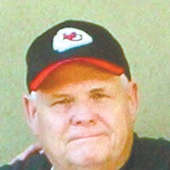You Say It’s Your Birthday

That title is from the legendary “Birthday” record, written by John Lennon, and released as a hit single by the Beatles in 1968. This Sunday, I will celebrate another birthday. If I had a traditional cake, there would be so many candles the flames would likely require a 911 call to the fire department. Still, as in the line from that Beatle’s song, “we’re gonna have a good time!”
That Beatles single was released on a 45 record. The number represents the revolutions per minute that a record revolves on its turntable. These will only be familiar to a select segment of our readership. There are some examples of 45 records dating back to the late 1940s, but their heyday was in the ‘50s and ‘60s.
My parents found an old phonograph player in the mid-’60s, that also had a collection of 33-1/3 records. These records were larger than a 45, but smaller than a Long Play 78, that became the fashion in the late ’60s into the ’70s. All of the records had an opening in the middle, which one used to place a record upon the stylus post. The 45 records had a much larger opening, and you had to have an adapter to play them on the normal stylus posts. I am guessing this size difference had something to do with the fact that jukeboxes only played 45 records.
The music industry was very different during the era of the 45 records. The radio stations kept track on a weekly rating system that was called the “Top 40.” Once released, a record was charted by how many times it was played on the jukeboxes of America.
The radio stations have a lot to do with the promotion of a single. The guys who worked at those AM radio stations (bet that takes some of you back a bit), were called disc jockeys. They could often determine the fate of a record, simply by playing it a lot during the early stages of its release.
One of the most famous of these nationally known disc jockeys was the legendary “Wolfman Jack.” In our area, most teenagers listened to WHB 710 AM, out of Kansas City. My favorite disc jockey on that station was a guy named Phil Jay.
When you listened to WHB, they played almost exclusively the Top 40 songs, and they announced the changes in the position of each record on those charts weekly. They also introduced new records for the recording industry. If they thought that a particular song was going to be popular, they would announce it as a “pick hit of the week.”
Thinking back to those days I am reminded of how much we were tuned in to music. Most of us had access in different methods which now seem almost antique. The first way we listened was playing our 45 records on a basic phonograph player. Some of our families had large record players that were encased in fancy furniture cabinets. There was a smaller cheaper style player, that was sold mostly to teenagers. I had not celebrated many birthdays when my sister got her first phonograph, complete with the adapter for 45s.
Every home and car had AM radios, and we listened to stations like WHB daily. In that time, every restaurant and many other businesses had jukeboxes for kids to play favorite tunes. There was one style of jukebox that had individual pay machines at each table. You could turn the encased pages of selections to pick out the songs you wanted to hear. All of these jukeboxes actually held real 45 records. For a nickel, you could pick a song, and for a quarter you could select six songs.
In Nevada, we had a gathering place for teens known first as the “Youth Club,” and later the name was changed to “Tiger Town.” Inside, these establishments had soft drinks and snacks for sale. There were pool tables and pinball machines, but the most popular offering was the jukebox. We not only played our favorite songs, we also danced to them.
By the time I went off to college, the long play 33-1/3 records had become the norm. These records were albums that held several selections. If you were lucky you could afford a bigger turntable complete with better speakers. The Beatles were still the most successful recording artists during this era, and their albums sold the most. On each album, recording artists would have one song that was often picked to be on the Top 40 list. I am not sure how these were selected because the jukebox was gradually becoming a thing of the past.
Technology rapidly changed the music industry. Most autos began to offer AM, FM, and CD players. Even that has become somewhat obsolete. Just like the personal digital music devices, you can also have satellite radio in your vehicles. Apple offered the first iPod (small digital player complete with earphones) in 2001. Now there are multiple systems such as Apple Music, which offers live stream songs and videos.
So as I get ready to celebrate another (not too joyfully anticipated) birthday, I am reminded of the “Birthday” recording by the Beatles and how much has changed during my lifetime in the music industry. I was gratified to learn recently that many of the millennial generation have found a new love and respect for the vinyl long play albums from that era. I actually buy my son some old albums as birthday gifts. A couple of years ago, I sent him Joe Cocker’s “Mad Dogs and Englishmen.”
If I had a birthday wish, it would include being back at Tiger Town with my friends, once more dancing to the jukebox. Ouch! That makes my old bones ache just to ponder that thought!

